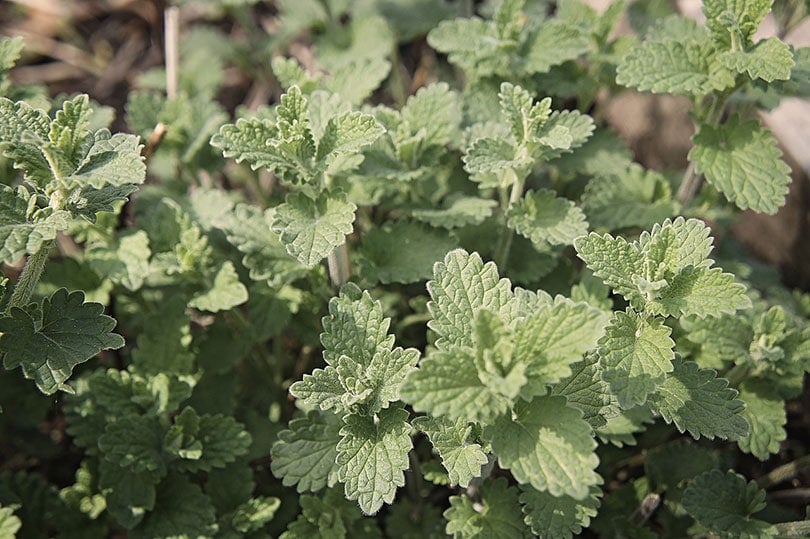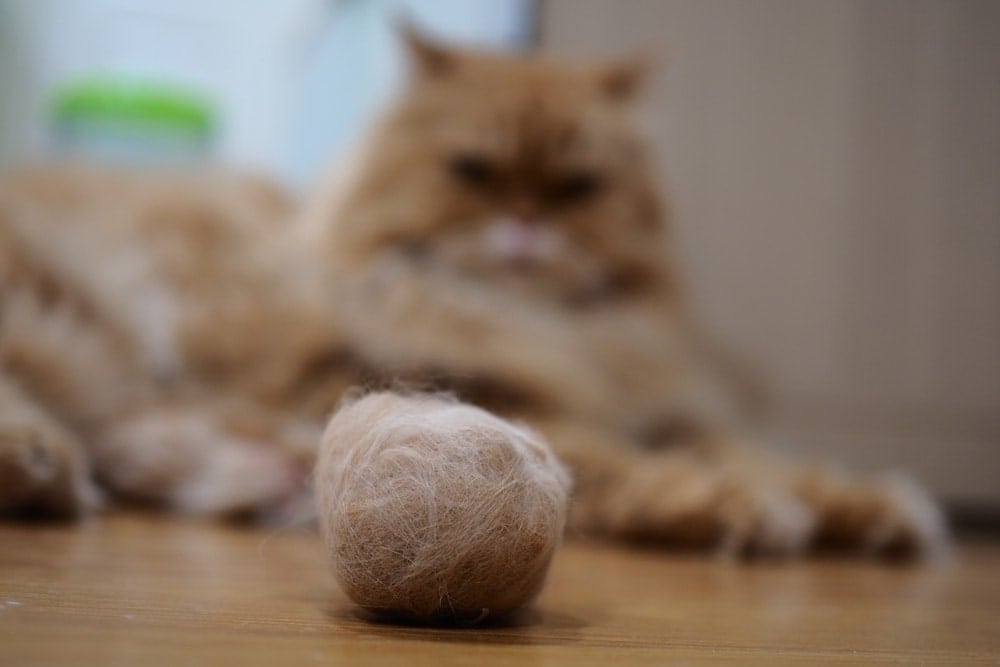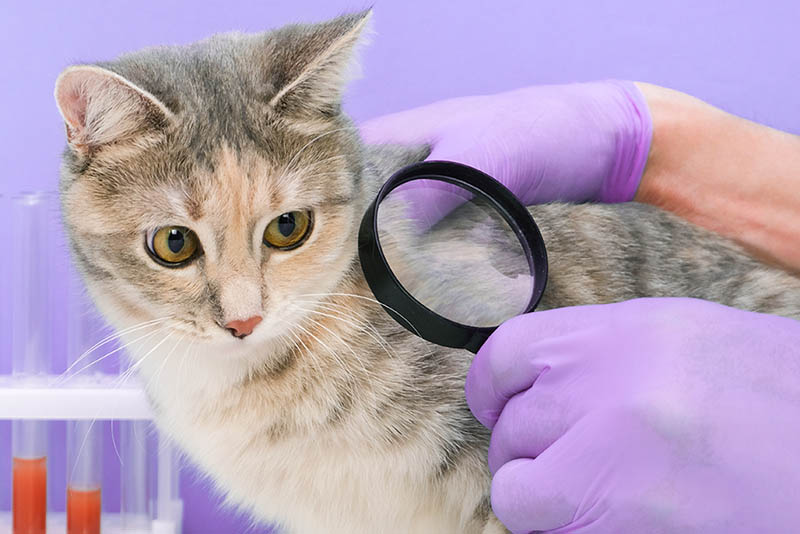Are Fiddle Leaf Figs Toxic to Cats? Vet-Approved Facts and Safety Guide
Updated on
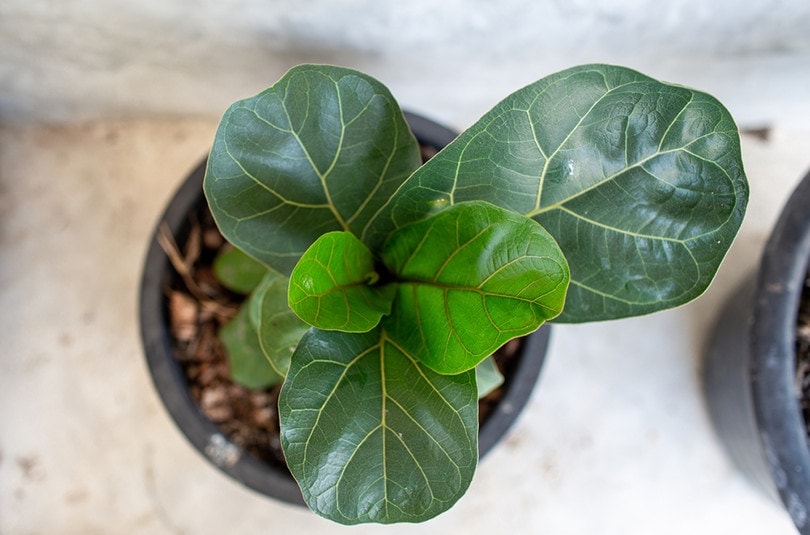
The Fiddle Leaf Fig, or Ficus lyrata, is a species of plants in the Moraceae family. It’s a very popular house plant with beautiful and unique foliage. As iconic as this house plant is, cat owners should beware of the Fiddle Leaf Fig. While rarely fatal for cats to ingest, Fiddle Leaf Fig is toxic to cats and can cause severe irritation when chewed or ingested.
To help you keep your cats safe, we’ve researched everything you need to know about the Fiddle Leaf Fig. We also compiled a list of other toxic plants and safe plants for cats.
Cats and Fiddle Leaf Figs
All parts of the Fiddle Leaf Fig are mildly toxic to cats, but cats mostly get poisoned by the white, milky sap that exudes from the plant’s stems and leaves. When these plant parts break, they exude a milky sap containing sharp calcium oxalate crystals that can cause skin irritation and gastrointestinal upset.
These are some common symptoms that your cat may experience:
- Pain and oral irritation
- Skin rash
- Drooling
- Vomiting
- Diarrhea
Because the sap is irritating, you’ll most likely notice your cat rubbing their face or licking their paws if they come in contact with it.

What to Do if Your Cat Eats a Fiddle Leaf Fig
Since the sap can irritate the skin, make sure to wash any part of the body that touches it. You can use pet shampoo to rinse off the sap. If your cat has eaten a part of the plant, you can rinse their mouth with water. Usually, we recommend not giving cats milk as they are generally lactose intolerant, but in this case, a small amount of milk can help you flush your cat’s mouth out.
Not all cases of ingesting Fiddle Leaf Figs warrant a visit to your veterinarian’s office. However, make sure to always contact your veterinarian for any specific instructions or treatments.
Oftentimes, you’ll just have to monitor your cat’s symptoms for the next couple of days, but this will depend on the amount ingested and your cat’s current health status. Sometimes, your veterinarian may want to give your cat medication to minimize the negative effects of the toxins in your cat’s body. Another important thing to keep in mind is that another plant shares a similar name to the Fiddle Leaf Fig. Philodendron bipennifolium is sometimes referred to as the Fiddle Leaf Philodendron.
The Fiddle Leaf Philodendron is also toxic to cats. It contains insoluble calcium oxalate crystals too that can severely damage your cat’s digestive tract as they travel through the body.
More Popular Houseplants That Are Toxic to Cats
Tropical plants tend to be popular house plants because many species tend to be hardy and come with easy care instructions. However, many of them contain toxic substances. Therefore, it’s crucial to do your research to ensure that you don’t bring home a plant that’s dangerous for your cats.
When shopping for house plants, you can immediately avoid the following.
- Dumb Cane (Dieffenbachia) – The Dumb Cane is popular due to its beautiful leaves. However, it contains insoluble calcium oxalate crystals. It also has proteolytic enzymes. These enzymes don’t typically cause any symptoms, but if a cat ingests a large amount, they may experience an upset stomach, vomiting, or diarrhea. The crystals cause intense irritation and pain when in contact with the mouth.
- Lilies (Lilium and Hemerocallis species) – Absolutely avoid bringing home a true lily at all costs, and even handling one if you have cats. The exact toxic property of this plant has yet to be identified, but all parts of the plant, including the pollen, are extremely toxic to cats. Cats having contact with any part of a lily will lead to acute kidney damage and death. As little as one leaf of a Daylily can be a lethal dose.
- Monstera Deliciosa – This plant, sometimes called Ceriman, is also a species of Philodendron. So, just like the Fiddle Leaf Philodendron, this plant contains insoluble calcium oxalate crystals. Fortunately, Monstera Deliciosas have a very bitter taste, so it’s highly unlikely that your cat will continue to chew at its leaves after the first bite.
- Pothos (Epipremnum aureum) – Pothos is a popular vining plant because it’s very easy to grow. However, it contains insoluble calcium oxalate crystals. On top of that, cats may enjoy swatting at the vines, which makes them more susceptible to breaking the leaves and stems and coming in contact with the calcium oxalate crystals. These cause intense irritation on contact, drooling, vomiting, and difficulty swallowing.
- Sago Palm (Cycas and Zamia species) – The Sago Palm isn’t a true palm tree. It’s a cycad, and like many cycads contains a toxin called cycasin, cyanogenic glucosides, and several other toxins. All parts of the Sago Palm are highly toxic, with the seeds containing the highest concentration of the toxins. Ingesting cycasin can cause liver failure leading to death.
So make sure to contact your veterinarian right away if you suspect that your cat has ingested any part of the plant.
Popular House Plants That Are Safe for Cats
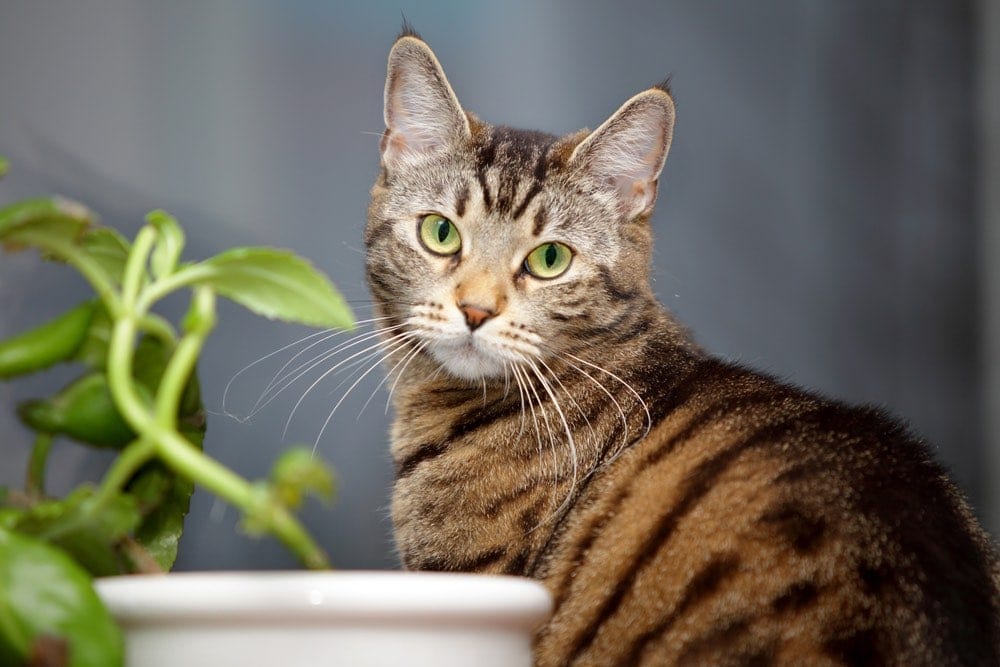
House plants add a natural and refreshing touch to any interior, so it’s always nice to have a few placed around a living space. Fortunately, there are many beautiful common house plants that don’t contain any toxic properties.
If you’re interested in staging your space with live plants, you have a wide selection of plants that are safe for cats:
- African Violet (Saintpaulia species)
- Banana Tree (Musa acuminate)
- Boston Fern (Nephrolepis exalta bostoniensis)
- Blushing Bromeliad (Neoregalia species)
- Calathea species
- Cast Iron Plant (Aspidistra elatior)
- Friendship Plant (Pilea involucrata)
- Haworthia species
- Phalaenopsis Orchid (Phalaenopsis species)
- Parlor Palm (Chamaedorea elegans)
- Peperomia species
- Polka Dot Plant (Hypoestes phyllostachya)
- Pony Tail Plant (Beaucarnea recurvata)
- Prayer Plant (Calathea insignia)
- Spider Plant (Chlorophytum comosum)
 Conclusion
Conclusion
Although Ficus lyrata is rarely fatally toxic to cats, you must avoid having it in the home because it causes extreme irritation for cats. There are many other plants with beautiful leaves that are also safe for cats.
So, with a little research, you can have a beautifully decorated home with a wide variety of plants while keeping your curious cats happy and safe.
Featured Image Credit: Jantanee Boonkhaw, Shutterstock


